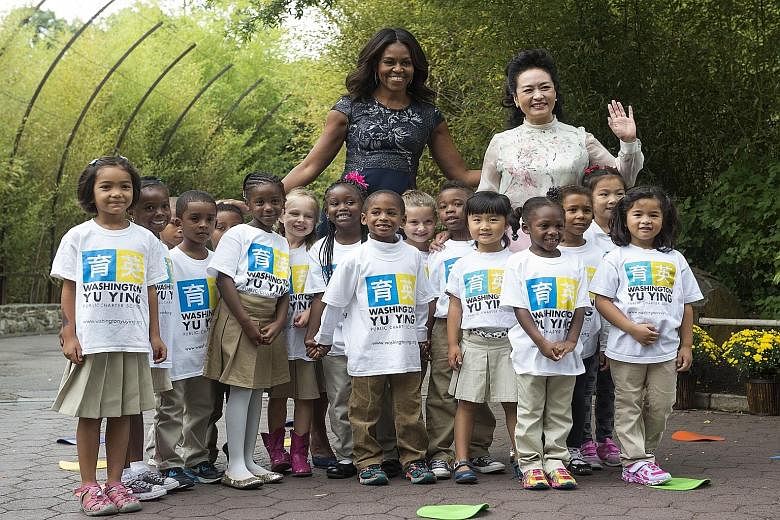WASHINGTON • Asians will account for the bulk of immigrant inflows into the US by 2055, overtaking Hispanics as the largest group of people seeking to adopt citizenship, says a new study.
The trend will result in Asians becoming the third-largest ethnic group in the US by 2065, supplanting those of black ethnicity. In addition, the immigrant flows will result in the proportion of people of white ethnicity falling below 50 per cent of the population for the first time in the country's history by 2055, the Pew Research Centre study shows.
The estimates by the think-tank indicate the proportion of Asian immigrants within overall inflows into the US will rise from 26 per cent this year to 38 per cent by 2065. In contrast, Hispanic numbers will fall from 47 per cent to 31 per cent. The shift in the balance will take place in 2055, when the proportion of Asian immigrants will touch 36 per cent, whereas that of the Hispanics will dip to 34 per cent.
Overall, the Asian and Hispanic population in the US would also be on an upswing. From just 6 per cent this year, the Asian population in the US would more than double to 14 per cent by 2065. Hispanics would experience a slower increase, moving up from 18 per cent this year to 24 per cent by 2065.

In contrast, the proportion of white people in America is projected to decline from a majority this year - 62 per cent - to 51 per cent of the population by 2045, before dipping below the halfway mark by 2055, at 48 per cent. By 2065, the proportion of whites in the population would have slid further to 46 per cent, according to the Pew data.
The proportion of people of black ethnicity would also increase during the corresponding period, by one percentage point from 12 per cent to 13 per cent. However, due to the faster rise in the Asian population, the black population would be relegated to being a smaller minority in the US by 2065.
The Pew Research Centre published the report to signify the 50th anniversary this week of the immigration Act, which put an end to a system that was based on country quotas that overwhelmingly favoured immigrants from northern Europe. The new system opened legal immigration to people from all countries, putting the top priority on bringing in family members of people living in the US, especially US citizens, while also seeking to draw foreigners with desirable work skills.
"This most recent period really does reflect the notion that the United States is a nation built on immigration and has been able to absorb many immigrants from different parts of the world," Mr Mark Hugo Lopez, director of Hispanic research at the Pew Centre and an author of the 103-page report, told the Guardian newspaper.
According to the Pew data, immigration inflows into the US will rise from 1.2 million per annum this year to two million per annum by 2065. The US population is expected to reach 441 million by 2065, compared with 324 million today, with 88 per cent of the increase linked to future immigrants and their descendants.
In recent years, immigration from Latin America has been slowing, mainly because of what the report described as an "abrupt slowdown" of illegal immigration from Mexico. With Mexicans accounting for only 15 per cent of all new immigrants in 2013, the Pew report found, the share of newcomers who are Latino is at its lowest level in five decades.
"At the same time we've seen a growing number of immigrants, particularly from China or India, who are coming for reasons such as pursuing a college degree or coming here to work temporarily in the high-tech sector," Mr Lopez was quoted as saying.
An opinion poll included in the Pew report showed the American public was divided on the impact of immigrants on society.
While 45 per cent of Americans said immigrants were making society better in the long run, 37 per cent said they were making it worse. Another 16 per cent said immigration was not having much effect.
The survey found nearly half or 49 per cent of respondents wanted to see immigration reduced, with eight out of 10 people indicating that the system either needs major changes or has to be completely rebuilt.
But one of the interesting findings of the survey was that Americans had a better disposition towards Asian immigrants than those from other parts of the world.
Around 47 per cent of the 3,147 people surveyed said immigrants from Asia had a positive impact on American society, compared with about 44 per cent who said the same about immigrants from Europe.

